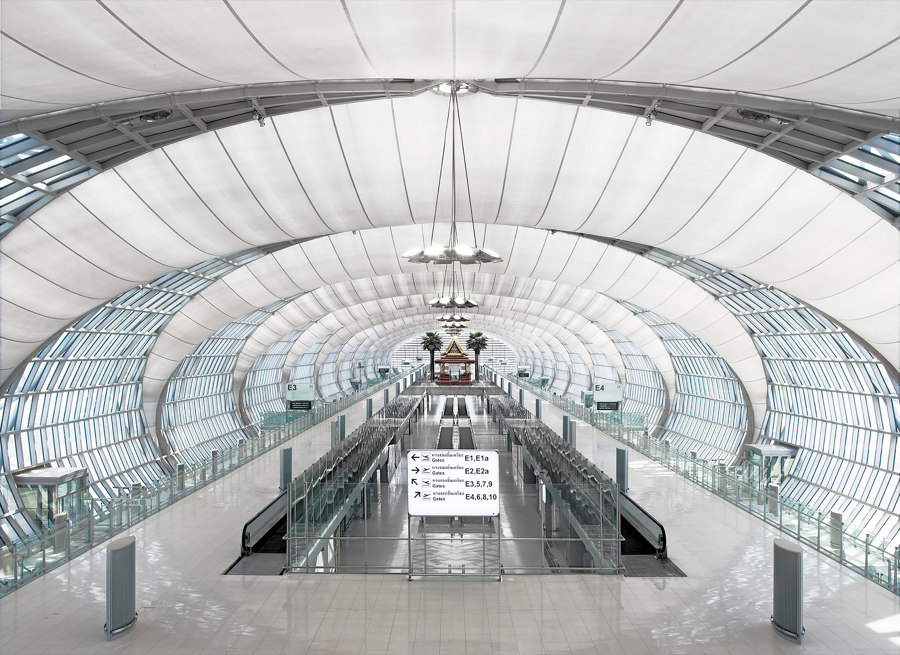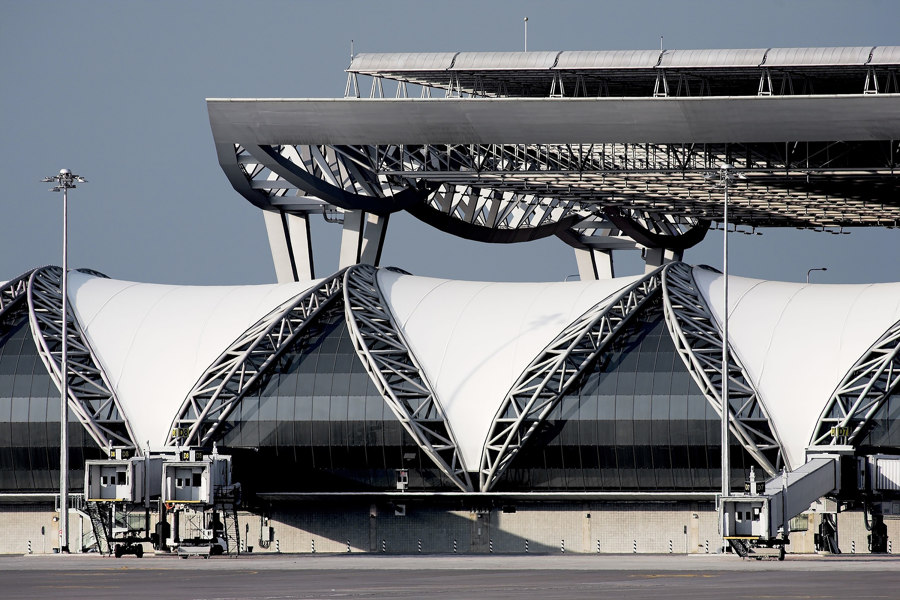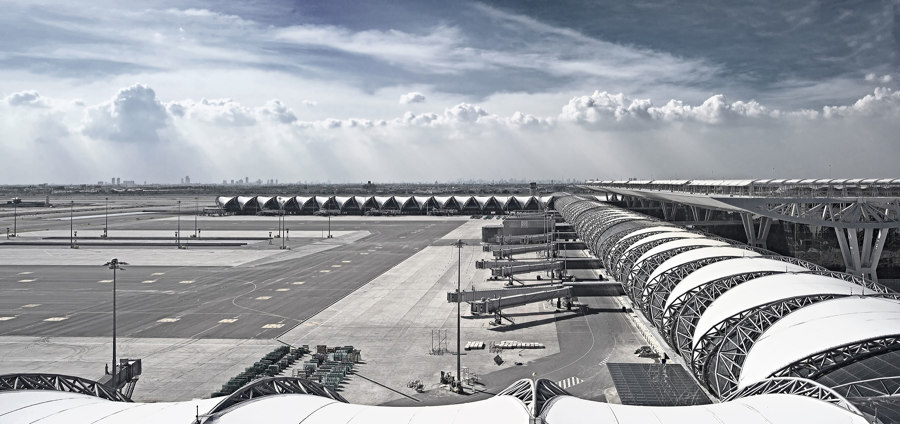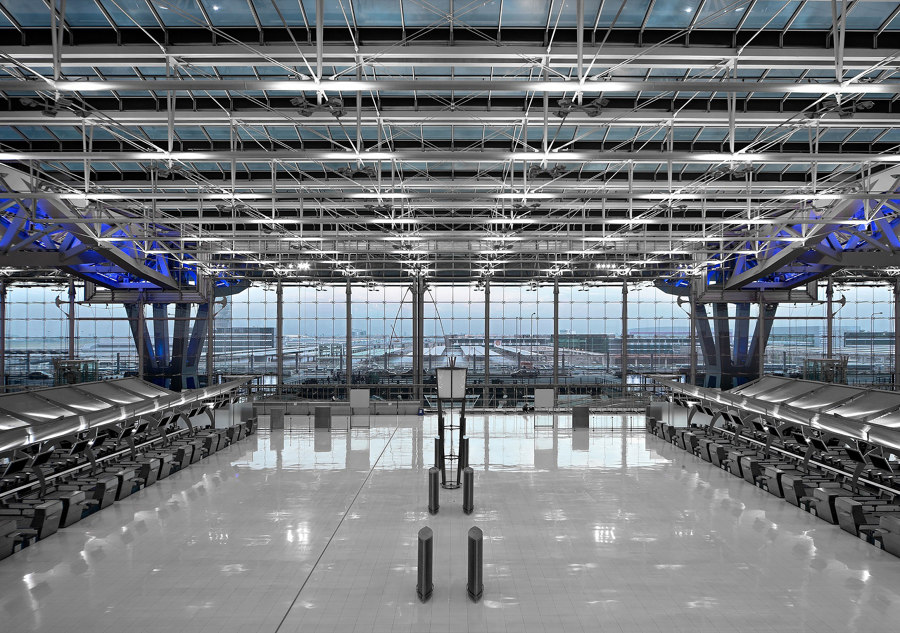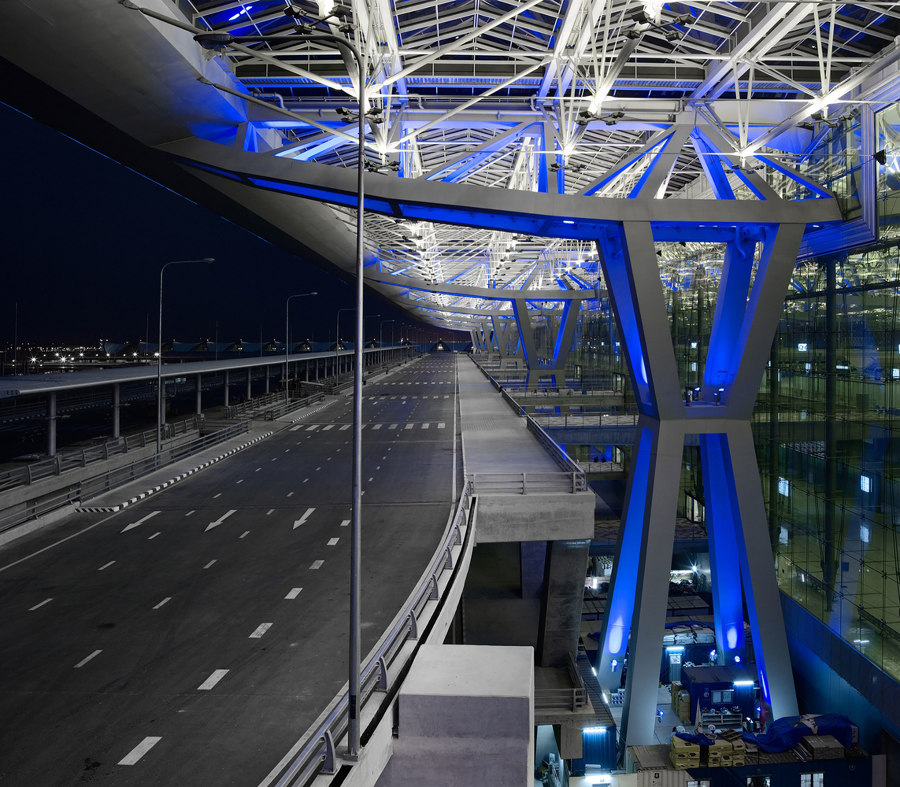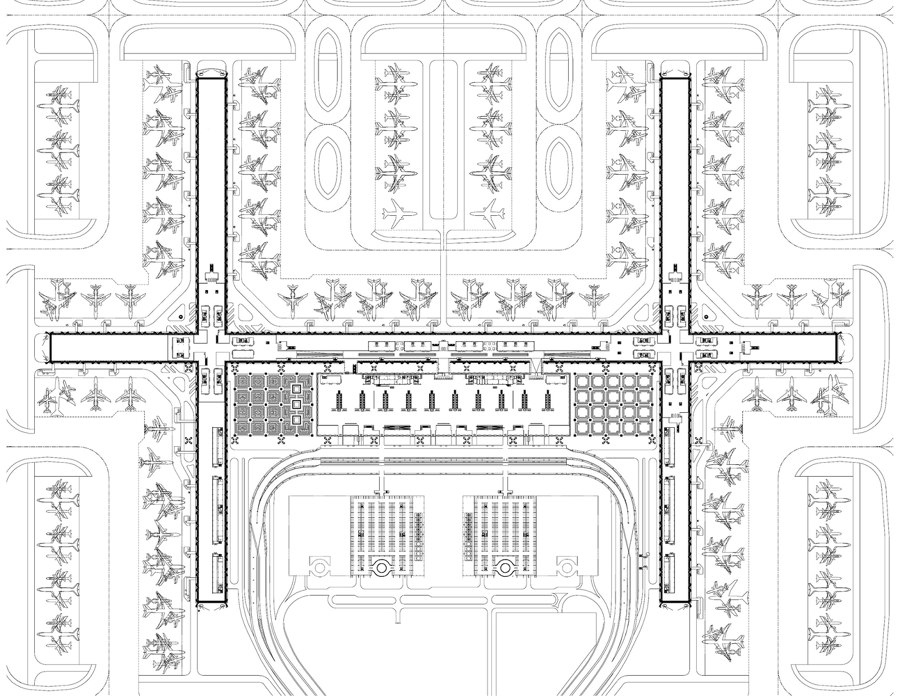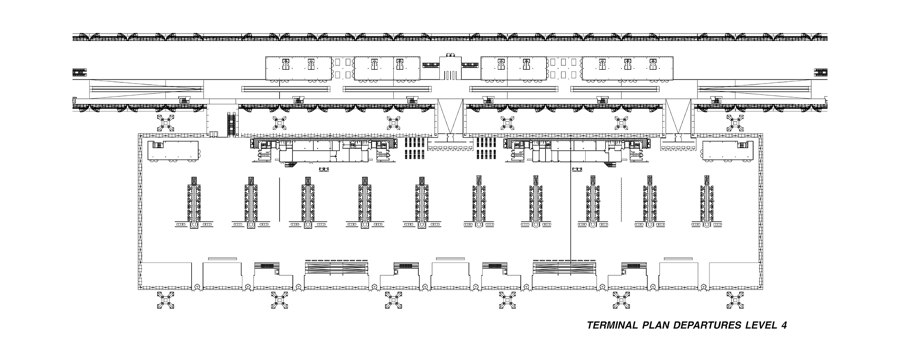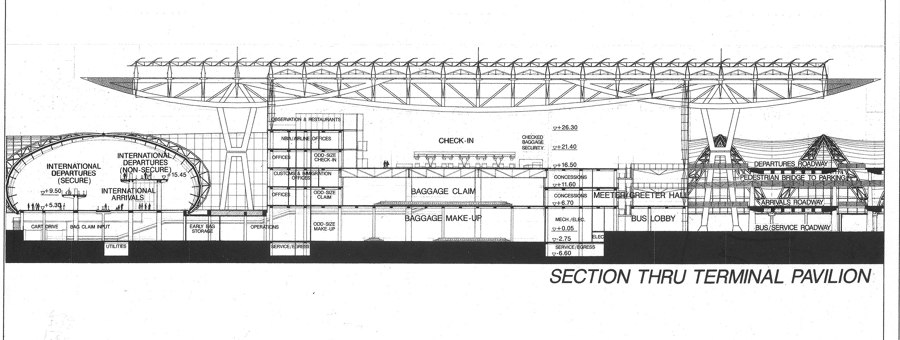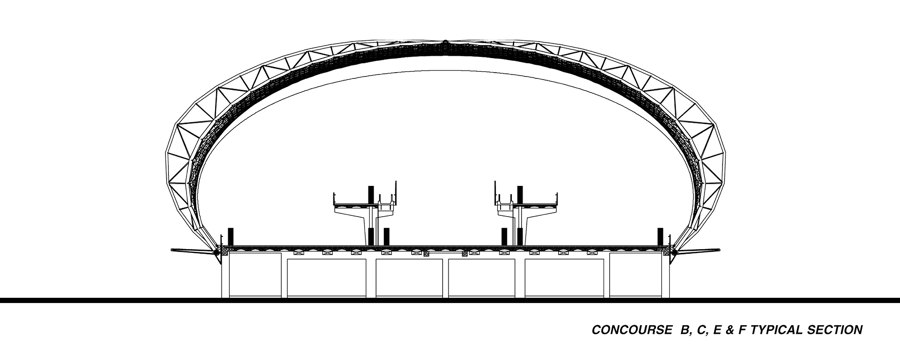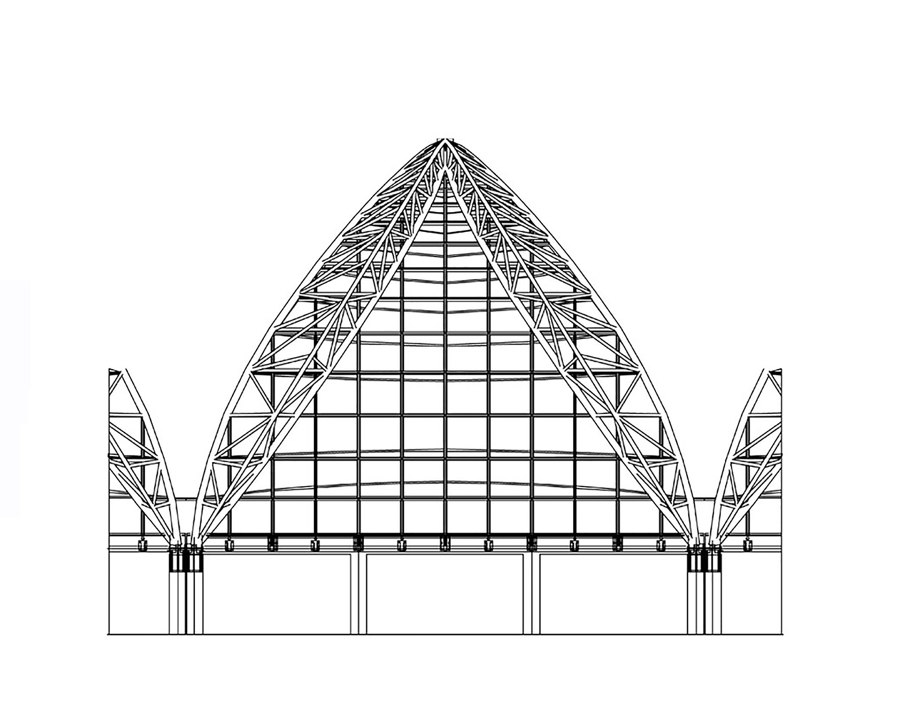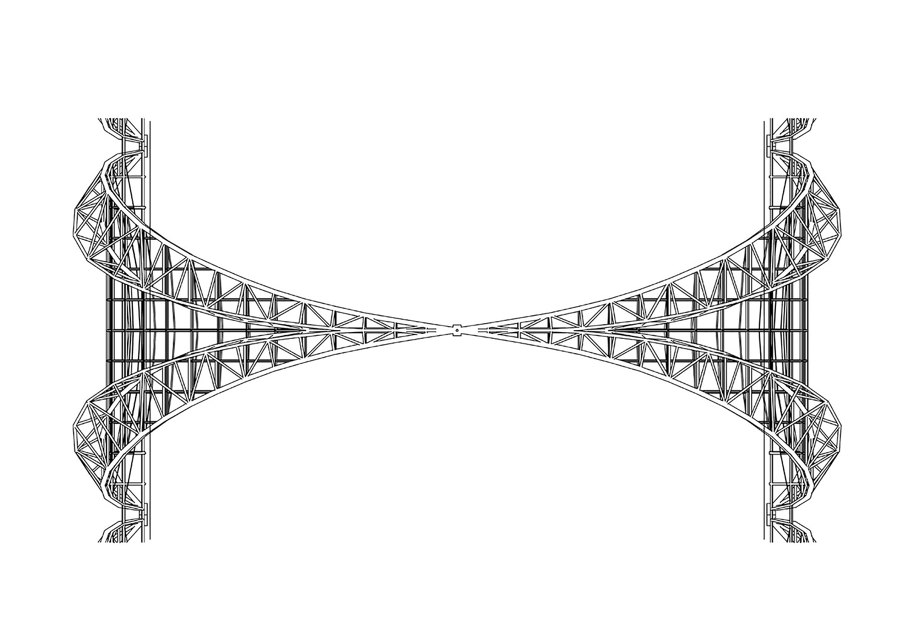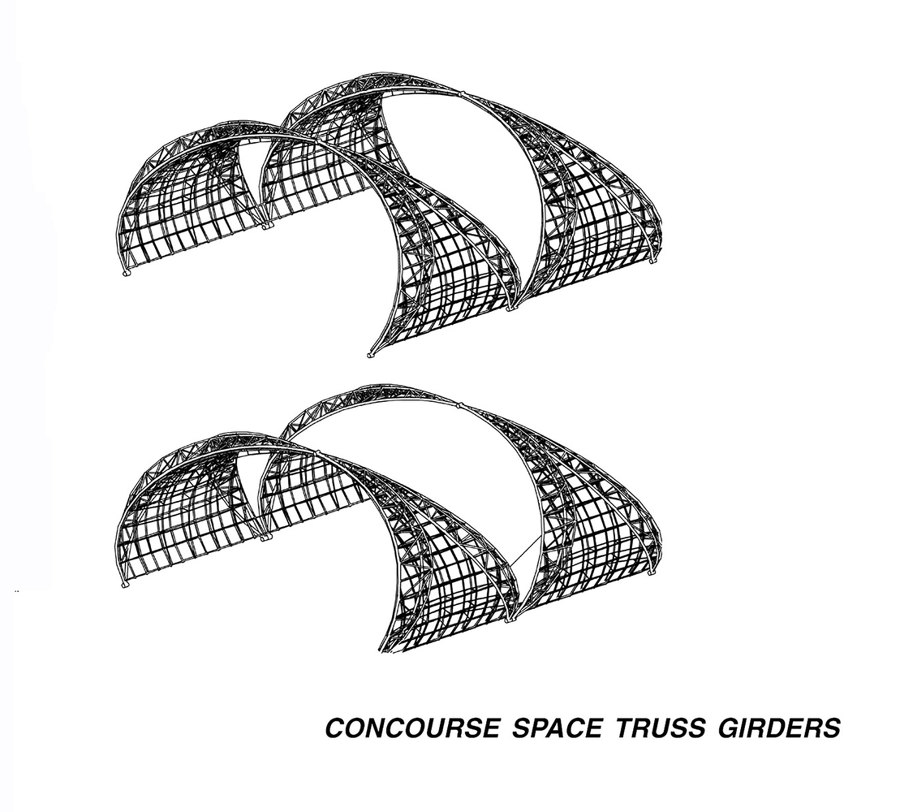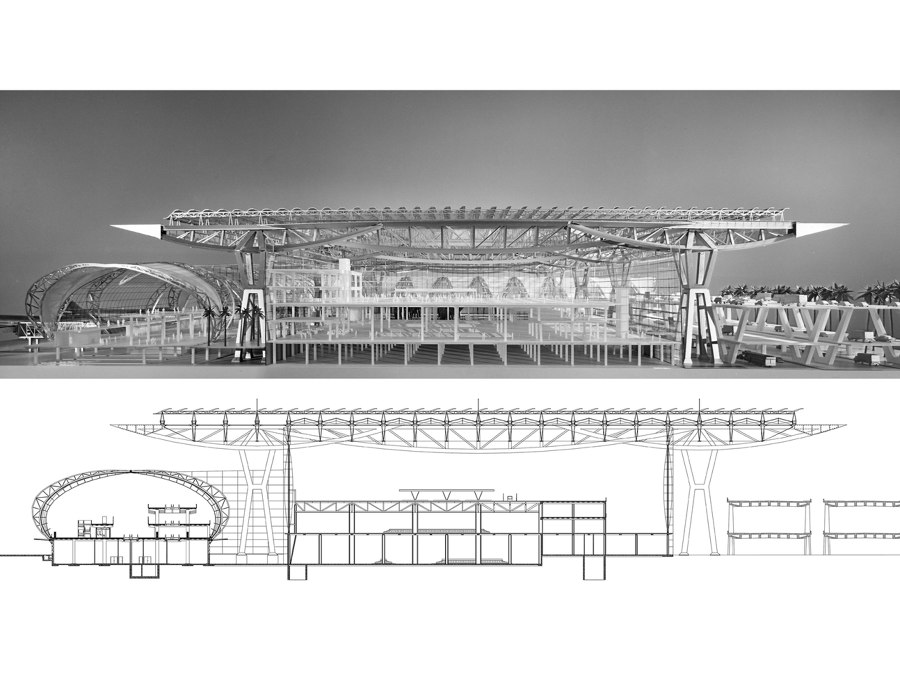The Suvarnabhumi Airport is constructed on a greenfield site 24 km east of Bangkok. The first phase, accommodating 45 million annual passengers will include 56 contact gates and 64 hardstand positions with 563,000 SM of terminal facilities. Planned maximum capacity after phased expansion will be 120 million annual passengers.
The masterplan utilizes a terminal/pier concept that emphasizes passenger circulation over aircraft circulation.
A large roof trellis structure placed over the complex of functionally separate buildings unifies the site and provides the predominant architectural image as approached from the landside. Designed to accommodate future growth of the terminal pavilion, the trellis serves an important function by shading the structures below from direct sunlight, thereby reducing mechanical loads.
Outdoor spaces between the buildings are also shaded by the roof trellis and are important to the overall concept. Rather than simply comprising empty areas reserved for future expansion, they are landscaped courtyards, useful for pedestrians and a visual amenity for the passengers in the terminal above. Cultural artifacts and traditional architectural elements are placed within these landscaped courtyards, linking the terminal complex to the cultural traditions of Thailand.
The planning of the Suvarnabhumi Airport is a masterpiece of interdisciplinary work between architects and engineers. The complexity and the size of the airport asked for new architectural and engineering solutions. The goal to create a low-energy-need building and to design a building at the cutting edge of state-of-the-art technology required a very strict and close cooperation between all disciplines. The results are convincing, surprising and - sometimes - breath-taking.
The roof structure of the Suvarnabhumi Airport has a size of 567m by 210 m in plan and is comprised of 8 supertruss girders. These girders have a central span of 126 m and two cantilevering ends, which both have a length of 42 m. The entire roof is supported by 16 frame-type steel columns. Creating the architectural form by its function, the geometry of the supertruss girder was determined through the level of the bending moment.
The glazed Terminal Building is placed in the center below the roof structure. It has a size of 444 m by 111 m in plan and is comprised of cable facade walls with a height of about 35m. To guarantee life long high performance and low maintenance costs sunshade louvers, comprised of mill finish aluminum, are positioned on top of the roof structure. They have been designed to shade the Terminal Building from direct sunlight still allowing diffuse indirect lighting to enter the Terminal Building. Because the sunshading louvers have been positioned outside the building envelope, the absorbed solar heat will be transmitted to the environment by natural ventilation creating an energy saving ecological solution.
With the measurements described, it was possible to control the light and heat transmission creating a highly transparent building which is matching both highest thermal and visual comfort requirements.
The concourse enclosure, which will house the holdrooms and passenger transportation means, is comprised of 5-pin arch truss girders with an alternating system of glazed facades and a translucent fabric membrane set-up, which is spanned to bridge the 27 m spacing between the glass facades. The laminated glass of the glass facade will receive a sun protection coating and a ceramic frit of variable densities. While the fritting is relatively dense at the rooftop to achieve good solar protection against the high standing sun in Thailand, it decreases gradually towards the lower parts to allow for good views to the outside.
Design team:
Jahn
ssociate Architect / Engineer: ACT Consultants
Project Management: TAMS Consultants / Earth Tech
Structural Concept /Concourse Superstructure/ Facades: Werner Sobek Ingenieure
Climate And Environmental Concept: Transsolar Energietechnik
Main Terminal Superstructure: Martin/Martin
Structural Concrete: John A. Martin & Associates
Mechanical / Electrical / Plumbing: Flack + Kurtz
Acoustical Consultant: Blum Laboratorium
Lighting Art: Yann Kersalé
Interior Artwork: NT Architects-Planners
Baggage Consultant: BNP Associates, Inc.
General Contractor: ITO Joint Venture Italian-Thai Development Takenaka Corporation Obayashi Corporation
